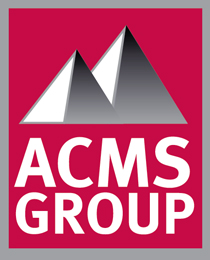Technological advances in the industrial sector have made countless new things possible. More than just creating stronger surfaces, industrial innovation has birthed new methods of repairing damaged structures. One of these new cutting-edge repair techniques is known as composite repair.
Composite repair can be used on numerous different products and throughout different industries, including automotive, aerospace, marine, surface transportation and sports equipment. Also used in construction, composite repair is frequently used specifically for industrial tank repair. This article will cover the signs of wear that would necessitate composite repair as well as the process itself.
How do you know you need composite repair?
Depending on the application, there are several ways to determine whether or not you need composite repair. You can start with a visual inspection.
If you see any obvious signs of physical damage or wear, you might need composite repair. These signs include leaking, corrosion, bumps, dings, dents, weathering and clogged pipes or intake vents.
The tough part is when there’s damage that’s invisible to the naked eye. One way to determine if there is damage to the structure you’re inspecting is to perform a non-destructive test, or non-destructive inspection.
A non-destructive test is a way of evaluating the structural integrity of an object without damaging it. The six most used testing methods are visual testing, ultrasonic, radiographic, magnetic particle, eddy current and liquid penetrant.
What are the typical composite repair procedures?
There’s a flow chart detailing the various steps of composite repair, and the first step is damage assessment. You’ll note whether the damage is surface level or excessive. If it’s excessive, you might want to scrap the material. You should also weigh the costs of repair and the extent to which it might be needed.
Next, you’ll determine which type of repair will be needed. It’s likely either going to be an easy repair or a complex repair. Easy repairs are used for lighter damage, and you can follow the guidelines for the respective panel-type to perform them. Complex repairs are more involved and are necessary when the structural integrity of the item has been compromised. You’ll likely want to use the original structural composite materials, if possible, to mimic the design and composition of the original.
A temporary repair is only used in extenuating circumstances. This could mean that an object or product is already in use and must remain in use, but it still requires a repair. A patch or a “belt and braces” technique can be used to hold the materials together while it’s transported to a proper repair shop.
Permanent repairs are performed under strict guidelines consistent with the composite material type in structured and controlled workshop environments. These repairs require the use of best practices and great attention to detail.
The final step of the composite repair process is a quality check. This is conducted by performing one of the aforementioned non-destructive tests. The most common test used is an ultrasonic test that bounces ultrasonic waves off of an object to detect any structural weaknesses or defects.
Call for your composite repair today
If you need industrial tank repair, composite repair is a sound solution. We’re the experts when it comes to composite repair, so give us a call at ACMS Group. No matter the object or the damage, we’ll fix it right up and have it good as new in no time.
